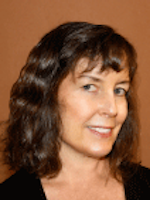Energy Trading Yields Lower Costs in New Zealand Tribal Community. Can U.S. Replicate This?
In the rural Te Reureu Valley of Halcombe, New Zealand, trading rooftop solar has begun among five properties housing Maori tribal members–indigenous Polynesian people–cutting costs to 12 vulnerable households.
This and other energy trading projects in New Zealand can demonstrate to local energy and microgrid proponents in the U.S. the possibility of generating and trading energy locally, cutting costs, providing resilience during outages and lowering carbon emissions in communities.
For the microgrid industry, it would allow for trading energy within the boundaries of a microgrid.
Local energy touted in America
In California, a group of nonprofits–including the Microgrid Resources Coalition– in January submitted to the California Public Utilities Commission comments that support the local energy concept.
And in Colorado, a nonprofit, Community Greenfields, seeks to implement energy trading in a microgrid that would serve a neighborhood in Henderson.
In New Zealand, low-cost surplus solar sold to vulnerable households
In the New Zealand project, solar was installed on five properties and the roofs of three families living on ancestral Maori land. In addition, a 120-KWh community battery was deployed next to the marae, or sacred meeting ground. The largest solar array stores excess power and buys power from the national grid when tariffs are low, according to a case history of the project.
Our Energy, which connects clean energy producers with local people who need electricity, sold surplus solar to vulnerable households at 18% of retail prices, or $0.06 NZD/kWh, according to the case history.
One of the goals of the project was to lower costs in ways that help tribal members remain living in the area.
Funding came from a grant from the Māori and Public Housing Renewable Energy Fund administered by New Zealand’s Ministry of Business, Innovation and Employment.
In the project, Our Energy serves as both a retailer and peer-to-peer trading platform that interacts with the electricity market and households and community spaces.
The pilot allows the tribal community to generate income by sharing excess energy production.
Electricity trading through a “virtual energy network”
John Campbell, founder and CEO of Our Energy, described the project as a “virtual energy network,” a collection of customers that form a collective and trade energy among its members, then acquire the rest of the power it needs from the wider market. The customers are generally located in the same suburban area, he said.
“A virtual energy network in New Zealand is like a virtual power plant (VPP). You are aggregating and controlling demand and distributed energy resources (DER),” he said.
This resembles a community choice aggregation (CCA) in California, but in New Zealand, the virtual energy network is run by a private entity. In California, CCAs are generally run by a city or county government, or by a joint powers authority made up of multiple cities and counties.
In the indigenous community example operated by Our Energy, the battery is on a separate connection to the local grid, and could separate from the grid using virtual power plant technology, Campbell explained.
The largest energy trading project run by Our Energy has 100 members, Campbell said.
Utility poles and wires transport local energy in New Zealand example
The Our Energy system picks up data from customers and community members on a 30-minute basis and creates a trading pool for them. The community members with excess power provide it to other community members. The project uses utility poles and wires to transport the energy, Campbell said.
Our Energy educates community members about the benefits of using as much energy as possible during the day, when solar is being produced. That’s the best way for them to save money.
There’s one downside to the New Zealand system, Campbell said. The local energy is exported into a big national “swimming pool” that doesn’t recognize whether the power is coming from a rooftop or a big hydro dam.
That’s also a challenge in the U.S., said Lorenzo Kristov, a consultant to the Climate Center who specializes in electric system policy, structure and market design
Market construct increases costs of local energy trading
“Physically (according to the laws of physics) power injected into local distribution wires flows to serve nearby load. It does not create power flow onto the transmission system,” he explained. However, the market construct says that all customer consumption from the grid–as measured by the customer's meter– uses the transmission system and must pay for that use.
“With the emergence of cost-effective DERs that can be deployed locally to meet local demand, this legacy rule about going through the transmission system adds costs to DERs that distort their economic viability,” Kristov said. Those who defend the legacy market construct are concerned about cost recovery for transmission. They say that if some customers don’t have to pay transmission charges, it will increase rates for others.
“But this is a short-term problem that could be solved without harming other ratepayers if policy makers would consider alternative ways to recover authorized revenue requirements,” he said. In the longer-term, relieving DER customers of transmission charges will incentivize the deployment of more DERs and reduce the need to build more transmission.
Under local energy concept, school could sell excess electricity
For example, a school with building rooftops covered with solar could produce excess electricity to serve the campus and its neighbors. Batteries that combine with solar to create a microgrid would capture the solar and use it in the late afternoon and overnight.
Under one potential model, a solar company might pay people to put solar on their roofs. They would benefit from any power they use themselves, and the solar company would have access to extra power that could be traded locally or donated to charities or low-income residents, Kristov said.
In spite of New Zealand’s retail choice, sales also go through the wholesale market even though customers are trading within a close radius. “The market imagines them to participate in a wider wholesale market,” Campbell said.
Again, this increases costs because the communities have to pay for transmission.
Our Energy charges its customers by splitting cost components–energy, networking, metering and retail costs–instead of lumping them together as a single daily charge, which is traditional, according to the case history. Trades within the community are transacted at $0.06 NZD/kWh.
If trades can’t occur, members are charged for wholesale spot market rates that change every 30 minutes. But extra generation can go into a community “pool” to be distributed later among community members. In normal circumstances, this value would be credited back to individual maraes, according to the case history.
Proposed Denver-area microgrid would provide energy trading
In the U.S., the energy trading concept is gaining support. Community Greenfields has proposed an agrivoltaics project coupling agriculture with solar microgrids, beginning with land next to a neighborhood in Henderson, located close to Denver, said Eric Darst, founder of the project.
About 1.5 MW of solar would be installed over a regenerative food farm on open land owned by Denver Water and coupled with energy storage. Community Greenfields would provide lower cost, sustainable and resilient renewable energy, via a microgrid controller, and produce food for the neighborhood residents.
Under the Community Greenfields plan, if no solar or storage is available, residents would buy power from the utility, United Power, an electric cooperative. Neighborhood residents would be billed directly from Community Greenfields. Excess power would be sold to United Power, said Darst.
Virtual Reality
Check out MGK's E-Book on VPPs
The nonprofit is now in discussions with Denver Water about leasing the land to Community Greenfields. Darst is also in discussions with United Power about leasing the subgrid that serves the neighborhood so that it can deliver the solar.
“This initiative embodies a bold reimagining of how neighborhoods can generate their own energy, grow their own food and foster deep local engagement,” said Michael Bendok, a partner in Fundusol, which is working to commercialize an agrivoltaics simulation and optimization tool that recently won a Department of Energy American Made Solar prize.
The project’s focus on local governance, disadvantaged community access and microgrid integration ensures that the benefits of renewable energy and sustainable agriculture remain in the hands of the people who need them most, Bendok said.
That’s also the goal of the New Zealand project: ensuring that local people benefit most from installing and selling local energy in their communities.
“The initiative aims to provide a community energy sharing program that offers affordable, sustainable and locally generated power to participants. It emphasizes reducing energy poverty, fostering cultural connections and promoting community well-being,” the New Zealand case history said.
Discuss All Elements of the Microgrid Value Chain
Come to Microgrid Conference 2025
April 15-17 in Dallas at the Sheraton








